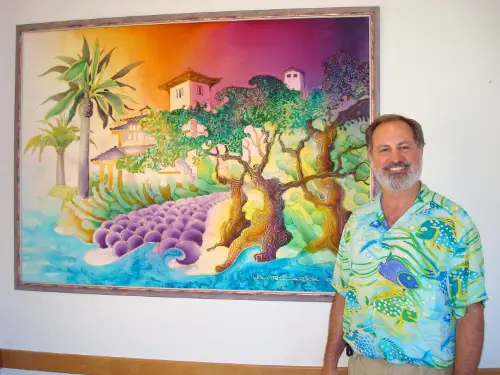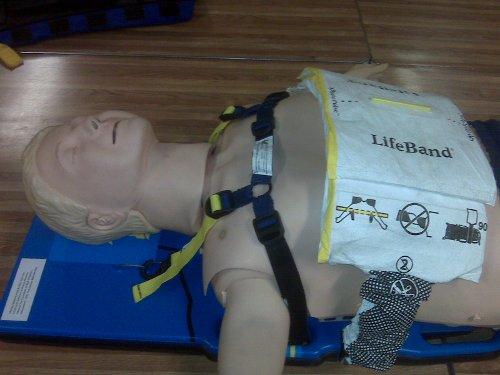- Lake County News Reports
The Veggie Girl: Summer squash

My husband came home Saturday morning with an armload of summer squash from the farmers’ market in Kelseyville. He had visions of grilled vegetables for dinner, and I certainly didn’t argue!
Laid out on our kitchen counter, they were a cornucopia of colors and shapes – squat, scalloped patty pan, two-toned crooknecks that were half yellow, half green, and chubby straight necked squash with dramatic dark and light striations.
Almost every farmer there had some form of summer squash to offer, and most were grown organically.
If you’re a home gardener, you’ve probably heard the jokes about getting rid of overzealous summer squash this time of year. Here are a couple of examples.
How do you know someone’s got no friends? When you see him shopping for zucchini in summertime.
Or, when do small town folks lock their doors? In the height of summer, for fear someone might slip a bag of zucchini in their car.
You get the idea.
A single squash plant can produce dozens of fruits over the course of a couple of months, prompting stealth gifts to neighbors and friends.
The truth is, young, tender, recently-picked summer squashes are a magnificent treat, whether grilled, sautéed, added to recipes, grated into salads or eaten in raw spears with a dip.
Thankfully, they can also be frozen for later use in recipes, and I’ll share that method below.
Modern day squash, whether summer or winter varieties, originated in Mesoamerica, in an area between Mexico and Guatemala, gradually spreading throughout the Americas. They were brought to Europe from the Americas by explorers.
Squash has been consumed for more than 10,000 years, but it was initially cultivated only for its seeds, as the ancestor of the squashes we know today had very little flesh, and what it did contain was bitter.
Squash is one of the “Three Sisters” planted by American Indians, with the others being maize (corn) and beans. All indigenous, they formed the basis of their agriculture. The cornstalk provided support for the climbing beans, and the beans shaded the squash, whose vines spread to provide ground cover against weeds. The beans also provided needed nitrogen for the soil.
The English word “squash” derives from the Native American “askutasquash,” a word from the Narragansett language, spoken in what is now Rhode Island. It literally means “a green thing eaten raw.”
In contrast to winter squashes, which are harvested in their fully mature state, summer squashes are harvested and consumed while immature. Otherwise, the skin becomes hard and the seeds bitter. Perhaps you’ve seen mature yellow crookneck squashes left on the vine resembling gourds, with thick, bumpy skin.
Summer squashes are generally divided into four main categories: crookneck (such as the yellow variety), straight neck, scallop (or patty pan) and zucchini (also known as Italian squash, or “courgettes” by the French and British). Plant breeders develop new strains each year, making for an interesting variety.
The best tasting summer squashes have been harvested when young, though not too young to have undeveloped flavor. They should be picked just as the blossom on the end of the squash begins to turn brown. Zucchini, crookneck and straight neck varieties should be between 4 and 6 inches long, and patty pan should measure 2 to 3 inches across.
Low in calories and high in water content, summer squashes are a good source of manganese, vitamin C, magnesium, vitamin A, fiber, potassium, vitamin K and folate. These nutrients have been shown to be beneficial for the prevention of atherosclerosis (hardening of the arteries due to fatty deposits), high blood pressure and diabetic heart disease.
Although phytonutrient research on summer squashes is limited, in studies they’ve shown a mild benefit in the prevention of cancer-like changes in cells. Other studies have shown them to be useful in reducing symptoms associated with prostate enlargement in men.
Zucchini is delightful prepared on the grill. Simply slice them into half rounds and thread them on a skewer so they lie flat on the grill. Brush them with a bit of olive oil, season with salt and pepper, and sprinkle chopped fresh rosemary or tender thyme tips on top. Grill until they’re seared and tender. Cherry tomatoes make for a nice contrast of color and flavor when threaded between the zucchini slices.
I enjoy yellow crookneck squash prepared in the simplest of ways. It develops such a tender sweetness – almost like a dessert – when gently sautéed with a bit of olive oil, garlic and a sprinkling of salt and pepper. If sautéing zucchini, sun-dried tomatoes (along with their oil, if jarred) pair well with them in the pan.
Being the quintessential versatile vegetable, summer squashes can be added to breads, muffins, pasta sauces, soups, stews, quiches, lasagna and casseroles, either as a complement to the recipe or the star of the show.
They can be sliced to make a crust for a vegetable or meat pie, and can be used in lieu of eggplant in your favorite Eggplant Parmigiana recipe.
Try it sliced thin on pizza with feta cheese, grated as an addition to potato pancakes, or in a hearty grilled veggie sandwich or wrap.
For a vegetarian treat, small zucchini may be roasted till tender in the oven and used in lieu of hot dogs in a bun.
When summer squash is frozen, it softens and is not ideal on its own, but since it serves as a component of so many recipes, it’s wonderful to have a supply on hand in your freezer.

To freeze, wash and slice the squash and blanch in boiling water for two to three minutes. Remove from the boiling water and place in an ice water bath to cool it down. Once cooled, drain the squash thoroughly and place in freezer safe zipper locked bags. Remove as much air as possible, seal partially and suck the remaining air out with a straw before sealing all the way. Lay bags flat in the freezer until frozen through.
I freeze grate zucchini raw in quantities needed for bread or muffin recipes, and allow it to thaw and drain before I use it.
A delightful benefit of summer squash is that their blossoms also are edible, with a plethora of creative ways to use them in cuisine.
They are sometimes available at farmers’ markets, but if you have a home garden, this tasty treat is at your fingertips. They’re quite perishable, so should be used within hours of harvest or purchase.
If you harvest them yourself, do so in the early morning before the blossoms have twisted shut. Male squash blossoms appear on long stems and can be harvested without curtailing production of squash. They should be picked with a length of stem attached. Female squash blossoms are attached to the end of the squash itself. Be sure to remove the bitter stamen in the center of each blossom before using them.
They’re a tasty and colorful addition when added raw to salads or as a garnish for soup. They can be added to the pan when sautéing summer squash, paired with cream cheese in an omelet or with Asiago cheese in a frittata, with cream cheese and chives for a spread, or with queso fresca (Mexican cheese) for a unique quesadilla.
Squash blossoms often are battered and fried, sometimes with stuffing, and I offer such a recipe today. They can be made with or without stuffing in this recipe, and either way is delicious. Enjoy!
Battered squash blossoms
The batter:
1 cup flour
1/2 cup cornstarch
1/2 teaspoon salt
1 cup fat-free chilled milk, beer or water
Cheese-mushroom stuffing:
1/4 cup ricotta cheese
1 garlic clove, minced or pressed
1/4 teaspoon each salt and pepper
2 tablespoon mushrooms, finely chopped
1 tablespoons fresh basil or parsley, minced
16 large squash blossoms, washed
Canola oil for frying
1. Prepare the batter first. Sift together dry ingredients, then whisk in milk, beer or cold water until smooth. Cover and set in the refrigerator for 30 minutes. Leftover batter can be stored for up to two days. If it is too thick after refrigeration, add a few drops of water to return to original consistency.
2. Meanwhile, prepare the stuffing. In a bowl combine the ricotta cheese, garlic, salt, pepper, mushrooms and basil. Open the blossoms and spoon about one 1/2 teaspoon of the mixture into the center of each. Avoid overfilling the blossoms. Twist the top of each blossom together to close. Place on a baking sheet and refrigerate for 15 minutes.
3. Pour the oil into a skillet to a depth of 1/2 inch. Heat over high heat until a small cube of bread dropped into the oil turns golden brown within seconds.
4. Briefly dip each stuffed blossom into the batter, then carefully slip into the hot oil. Cook until golden on all sides, about three minutes total cooking time. Add only as many blossoms at a time as will fit comfortably in the skillet. Transfer with a slotted utensil to paper towels to drain briefly.
5. Sprinkle with salt, if desired, and serve immediately.
Esther Oertel, the "Veggie Girl," is a personal chef and culinary coach and is passionate about local produce. Oertel owns The SageCoach Personal Chef Service and teaches culinary classes at Chic Le Chef in Hidden Valley Lake. She welcomes your questions and comments; e-mail her at
Follow Lake County News on Twitter at http://twitter.com/LakeCoNews and on Facebook at http://www.facebook.com/pages/Lake-County-News/143156775604?ref=mf .

 How to resolve AdBlock issue?
How to resolve AdBlock issue? 







